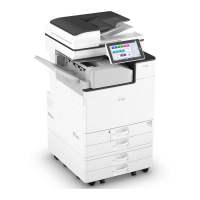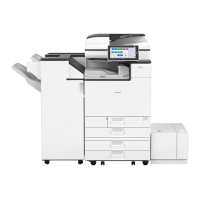"Authentication has
failed."
L0406-200
Too many requests
for authentication
occurred at one
time.
Try again later. If the problem persists,
check whether the machine is under an
authentication attack. The attack status
can be checked by the screen message, in
the system log, or in the e-mail
notification sent to the administrator.
"Authentication has
failed."
L0406-201
[Off] is specified in
the authentication
settings of the
LDAP server.
Select the server in [Settings] [System
Settings] [Settings for Administrator]
[Authentication/Charge]
[Administrator Authentication/User
Authentication/App Auth.]
[Register/Change/Delete LDAP Server],
and then press [Register/Change] and set
[Authentication] to a setting other than
[Off].
"Authentication has
failed."
L0406-202
L0406-203
The LDAP
authentication
settings or LDAP
server settings are
incorrect.
Check whether the LDAP authentication
settings or LDAP server settings are
correctly configured.
*4
Check whether the SSL settings are
supported on the LDAP server.
The login user
name or password
is incorrect.
Enter the correct login user name and
password. Change the login user name if it
exceeds 128 bytes in length or contains a
space, ":" or other unusable character.
The simplified
authentication
mode is incorrectly
used.
Check whether the server name, login
user name, password, and information
entered into the search filter are correct.
Note that authentication cannot be
performed if obtaining DN of the login
user name under the representative
account fails in the simple authentication
mode.
"Authentication has
failed."
L0406-204
Kerberos
Authentication has
failed.
Check whether the realm name registered
on the clock at the KDC (key distribution
center) and the clock of the device are
synchronized.
*3

